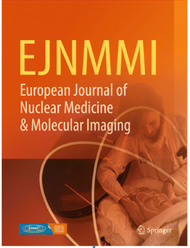- March 5, 2021
- Category: Nuclear Medicine, Scientific Publications

3D voxel-based dosimetry to predict contralateral hypertrophy and an adequate future liver remnant after lobar radioembolization
Fabiana Grisanti1, Elena Prieto 2, Juan Fernando Bastidas1, Lidia Sancho3 , Pablo Rodrigo1, Carmen Beorlegui4, Mercedes Iñarrairaegui5, José Ignacio Bilbao6, Bruno Sangro5, Macarena Rodríguez-Fraile1
1 Department of Nuclear Medicine, Clínica Universidad de Navarra, Pamplona, Spain
2 Department of Medical Physics, Clínica Universidad de Navarra, Pamplona, Spain
3 Department of Nuclear Medicine, Clínica Universidad de Navarra, Madrid, Spain
4 Department of Health, Government of Navarre, Pamplona, Spain
5 Liver Unit, Clínica Universidad de Navarra-IDISNA and CIBEREHD, Pamplona, Spain
6 Department of Radiology, Clínica Universidad de Navarra, Pamplona, Spain
ABSTRACT
Introduction: Volume changes induced by selective internal radiation therapy (SIRT) may increase the possibility of tumor resection in patients with insufficient future liver remnant (FLR). The aim was to identify dosimetric and clinical parameters associated with contralateral hepatic hypertrophy after lobar/extended lobar SIRT with 90Y-resin microspheres.
Material and methods: Patients underwent 90Y PET/CT after lobar or extended lobar (right + segment IV) SIRT. 90Y voxel dosimetry was retrospectively performed (PLANET® Dose; DOSIsoft SA). Mean absorbed doses to tumoral/non-tumoral-treated volumes (NTL) and dose-volume histograms were extracted. Clinical variables were collected. Patients were stratified by FLR at baseline (T0-FLR): < 30% (would require hypertrophy) and ≥ 30%. Changes in volume of the treated, non-treated liver, and FLR were calculated at < 2 (T1), 2–5 (T2), and 6–12 months (T3) post-SIRT. Univariable and multivariable regression analyses were performed to identify predictors of atrophy, hypertrophy, and increase in FLR. The best cut-off value to predict an increase of FLR to ≥ 40% was defined using ROC analysis.
Results: Fifty-six patients were studied; most had primary liver tumors (71.4%), 40.4% had cirrhosis, and 39.3% had been previously treated with chemotherapy. FLR in patients with T0-FLR < 30% increased progressively (T0: 25.2%; T1: 32.7%; T2: 38.1%; T3: 44.7%). No dosimetric parameter predicted atrophy. Both NTL-Dmean and NTL-V30 (fraction of NTL exposed to ≥ 30 Gy) were predictive of increase in FLR in patients with T0 FLR < 30%, the latter also in the total cohort of patients. Hypertrophy was not significantly associated with tumor dose or tumor size. When ≥ 49% of NTL received ≥ 30 Gy, FLR increased to ≥ 40% (accuracy: 76.4% in all patients and 80.95% in T0-FLR < 30% patients).
Conclusion: NTL-Dmean and NTL exposed to ≥ 30 Gy (NTL-V30) were most significantly associated with increase in FLR (particularly among patients with T0-FLR < 30%). When half of NTL received ≥ 30 Gy, FLR increased to ≥ 40%, with higher accuracy among patients with T0-FLR < 30%.
